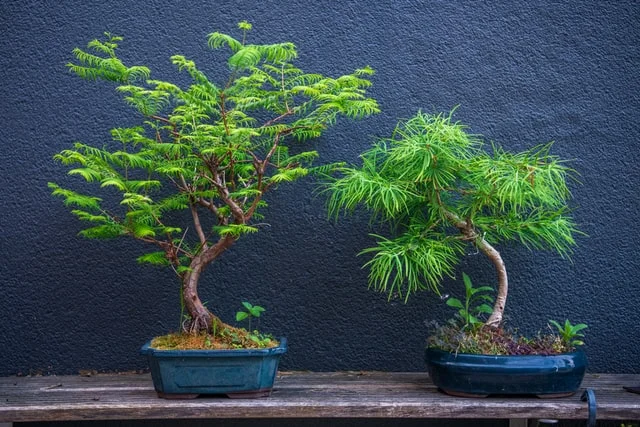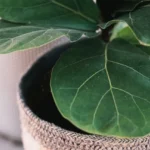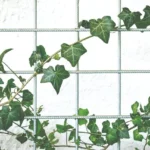Table of Contents
Introduction
If you are just starting, the best bonsai trees for beginners are Ficus Bonsai or a fig. This tree is easy to grow and can be either indoors or outdoors.
The Ficus is extremely resilient, and whatever you do to it it will probably survive, and better still it requires very little watering and really almost no maintenance.
Bonsai Trees for Beginners
Bonsai is an art that has been studied for centuries, and before you start to wire train your Bonsai Tree it is important to be sure that the roots are properly established.
Because Bonsai does not happen quickly this will take 3-5 years. Modern Bonsai developed in Japan over the last few hundred years while ancient Bonsai came out of China.
There are 5 main Forms of Bonsai Trees for Beginners
- Formal upright
- Informal upright
- slanted
- semi-cascade
- full cascade
How to Determine the size of your Bonsai
You determine your tree with the size of your pot. You just have to decide the size of the tree you would like to have, and it may be good to start small until you get used to doing Bonsai as a hobby.
Then you decide whether you want your outdoor or indoor Bonsai. Many species are not able to grow indoors, so be careful when making your selection. In a way, Bonsai is an art form, and healthy Bonsai require some humidity.
What You Need to Start Bonsai Trees
Your tree is a living organism and is never going to be finished, and you need to set aside some time every day to take care of it.
Especially if indoors your tree requires watering and fertilizing. Your Ficus will be alright either indoors or outdoors, but you may want to start it off in the house where you can keep an eye on it.
Equipment Required for Bonsai
- Wire
- Wire Cutters
- Bud scissors
- Concave Pruner
- Root hook
- Root cutter
- Knob cutter
- Watering can
- Chopsticks for bare rooting
Some people prefer to obtain their tools from Japan. You can start off spending as little or as much as you like.
When you are choosing your tree, make sure that it is a tree that grows well in your climate.
How to Get Started
Take a cutting from a healthy tree, ( take about three so that you will have a choice) your Bonsai will retain the characteristics of the tree.
This is quite a slow process, alternately you may find a tree in the wild that isn’t growing much and may be suitable. this probably won’t happen in a major city.
However, once you have your Bonsai tree chosen, you will be ready to get started.
Watering Your Bonsai Trees for Beginners
It is really important to learn how to water. and you don’t want to kill your Bonsai with overwatering.
Understanding your soil and drainage is also important. Your tree’s roots will grow outwards seeking nutrients, eventually, the roots will become very dense and you will need to re-pot your tree.
When you take it out of the pot it is also necessary to trim the roots. After 5 years you will also need to replace the soil in your bonsai pot.
When you do this take the Bonsai out of the pot and remove old soil from its roots, this where you use the chopsticks.
Fertilizing your Bonsai Trees
Your Bonsai is not able to seek out nutrients, like a tree in the woods does. You need to supply your tree with fertilizer regularly. The bonsai will require equal parts of:
- Nitrogen
- Phosphorous
- Potassium
- Do not overfeed as this damages roots
- Watch out for pests
Weeding your Bonsai
Weed very carefully as soon as you see the weeds coming up, if you are using a Ficus it won’t matter too much as it is hardy. Now that your Bonsai is established you can move on to styling it.
Styling Bonsai Trees for Beginners
Styling takes time to learn and continues over the life of the plant. Look at the shape of the tree and decide what you want to achieve.
Look at other people’s trees for inspiration. Styling usually begins with the trunk of the tree, and once you have the trunk right you can wire the branches into shape.
You use metal wire to bend the tree into the shape that you want. this will encourage a tree to adopt its new position.
Pruning Your Bonsai Tree
It is quite exacting pruning your tree, and it should be done after googling some pruning lessons, as it is different for every type of Bonsai.
At this time you will also need to choose the right pot for your Bonsai, and it will be part of the process to choose something that is right for your tree. Make sure that the color contrasts with your tree.
When learning Bonsai Trees for Beginners
Don’t start out with more than two trees, you will make mistakes, and these are your learner or L Trees, so get the basics right before you get more trees.
Find a person who has been doing Bonsai for a long time, and get them to mentor and educate you in Bonsai. Become informed and read about Bonsai, as you will learn so much from reading.
Visit Bonsai shops to get ideas and inspiration for your next Bonsai. Join a Bonsai group, they are in nearly every city and usually have monthly gatherings and guest speakers on varying topics.
Conclusion
For many, this is a lifelong interest and hobby and takes years to really master the art of Bonsai Trees. If you can get the trunk right, you will really have achieved something.
Once your Ficus is going well you can progress to a Hawaiian Umbrella ( a good indoor Bonsai), and that way you will get a bit of diverse experience.
There are quite a few books that will walk you through the process, and you will gradually become proficient at Bonsai, and if it holds your interest, you will do it all your life.
Photo by Jochen van Wylick on Unsplash


